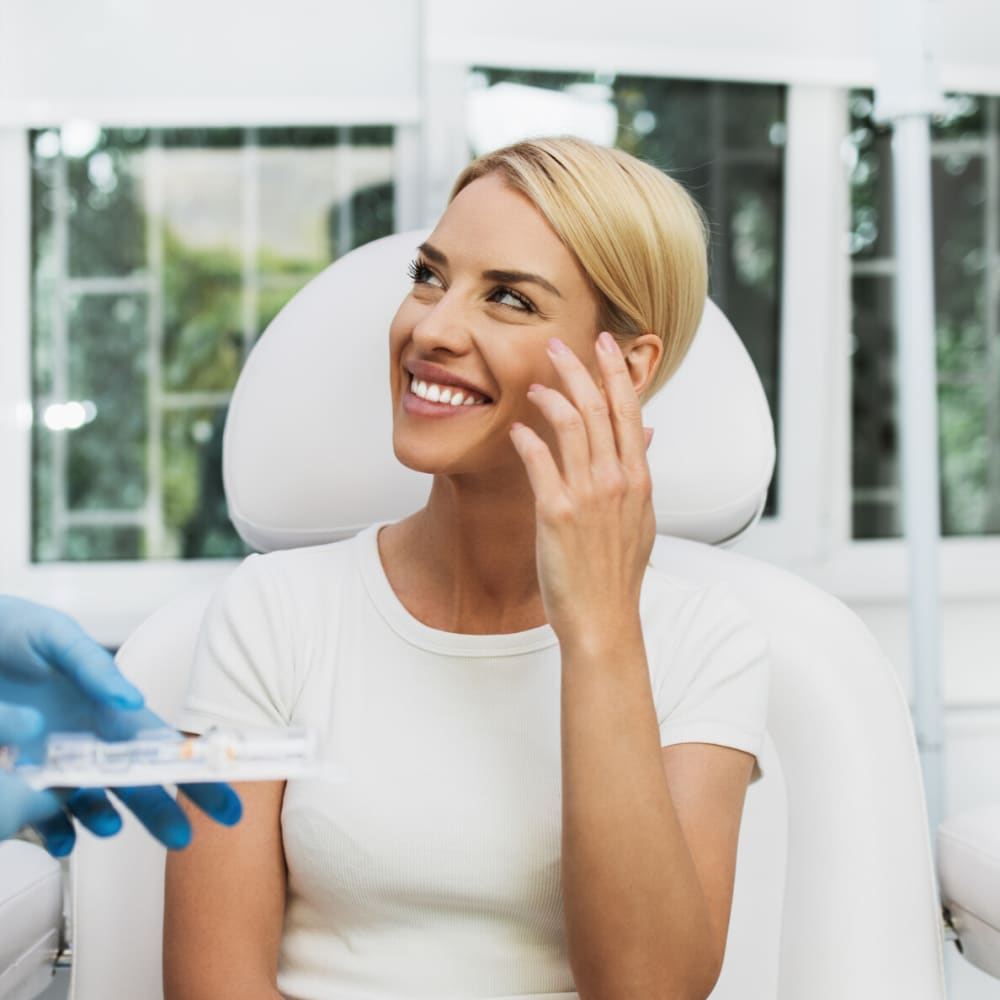Botulinum Toxin (Botox®) Treatments & Services
Capitol Dentistry in Toronto can offer Botox injections as part of an overall dental treatment plan.
What is Botox in Toronto?
Botox is a widely recognized brand of neuromodulating agents that contain Botulinum Toxin, a purified protein that has both therapeutic and cosmetic applications. This type of injectable treatment is now commonly referred to as Botox.
Injections containing Botulinum Toxin (such as Botox) can be part of your dental treatment plan to help treat several therapeutic conditions. If you're looking for a Toronto dentist who offers Botox treatments, we’re here to assist you.
When injected into the facial muscles, Botox releases neurotoxins. These substances can interrupt the signals from the nerves to the muscles, preventing the muscles from contracting, which ultimately helps them relax.

Interested in Botox treatment? Get in touch.
Our team would be happy to discuss how Botox treatments could be incorporated into your dental treatment plan. To learn more please contact us to schedule a consultation.
Muscle-Generated & Functional Dental Conditions
Botox may be used as part of your dental care plan to treat the following muscle-generated and functional dental conditions:
- Bruxism
- Clenching
- TMJ/TMD
- Masseter hypertrophy
- Excessive salivary flow
Aesthetic & Functional Dental Conditions
In some cases, while undergoing Botox treatment as part of your dental plan, you may also notice the following conditions are positively impacted:
- High lip lines
- Radial lip lines
- Black triangles between teeth
Botox FAQs
Read the answers to our most frequently asked questions. Can't find the answer you're looking for? Contact our team for more information.
-
How long does a Botox treatment take, and what is involved?
A typical Botox treatment takes 15-25 minutes and doesn't require anesthesia. A fine needle is used to inject Botox into specific muscles, and topical anesthesia (numbing cream) may be used.
-
Is Botox safe?
Our authorized prescribers are familiar with the relevant anatomy. They will employ measures associated with the safe and effective use of Botox, which includes proper storage, selection of the correct dose, and proper administration techniques. Our clinicians will provide patient-specific care and, for your safety, may inquire about any alterations to the anatomy such as prior surgical procedures.
-
How long does a Botox treatment last?
Botox treatments generally last 3-5 months, depending on how the individual person metabolizes it. Talk to your dentist about how often they recommend you receive Botox as part of your dental treatment plan.
-
What is included with the first consultation?
During your first consultation, your dentist will conduct a comprehensive dental assessment and recommend the optimal treatments for your dental treatment plan. If they conclude that Botox is right for you, your treatment appointment will be booked.
-
Is there anything I should do to prepare for treatment?
Yes. Avoid alcohol starting about one week before the procedure. We also recommend that you stop taking aspirin and anti-inflammatory medications two weeks before treatment to reduce bruising.
-
What are the risks associated with Botox?
Side effects from Botox are rare, and if they do occur, are typically mild and resolve within the first few days to a week after treatment. They can include:
• Pain, swelling or bruising at the injection site
• Headache or flu-like symptoms
• Droopy eyelid or eyebrows
• Crooked smile or drooling
• Eye dryness or excessive tearing
If you have any concerns about a side effect you are feeling or if your side effects persist longer than a week, please call us. -
Who should avoid Botox treatment?
Botox treatment should be avoided by:
• People with infection at the proposed injection site.
• People who have previously had an allergic reaction to Botulinum toxin type A injections.
• People with muscle problems or chronic diseases affecting the muscles.
• Children under the age of 18 years.
• Women who are pregnant or breastfeeding. -
What are the recommendations for aftercare?
• Try to contract the treated muscle areas periodically for up to four hours after treatment, by frowning and lifting eyebrows to allow the toxin to reach all of the treated muscle.
• Avoid rubbing or touching the injected areas and avoid having facials and massages for 48 hours to ensure that the treatment remains at the site of injection.
• Avoid vigorous exercise and alcohol-based products on the area treated for 48 hours.
 Your Yonge-Eglinton Invisalign® Provider
Your Yonge-Eglinton Invisalign® Provider